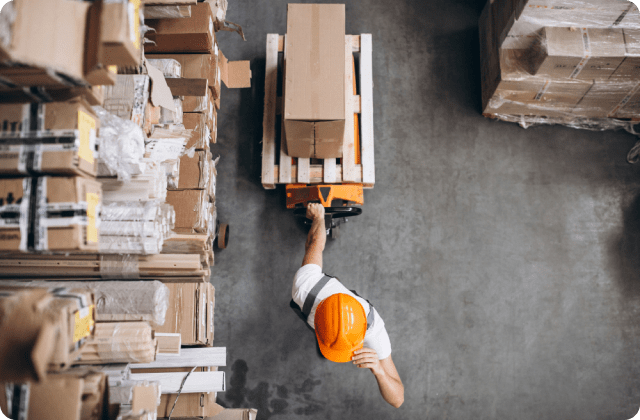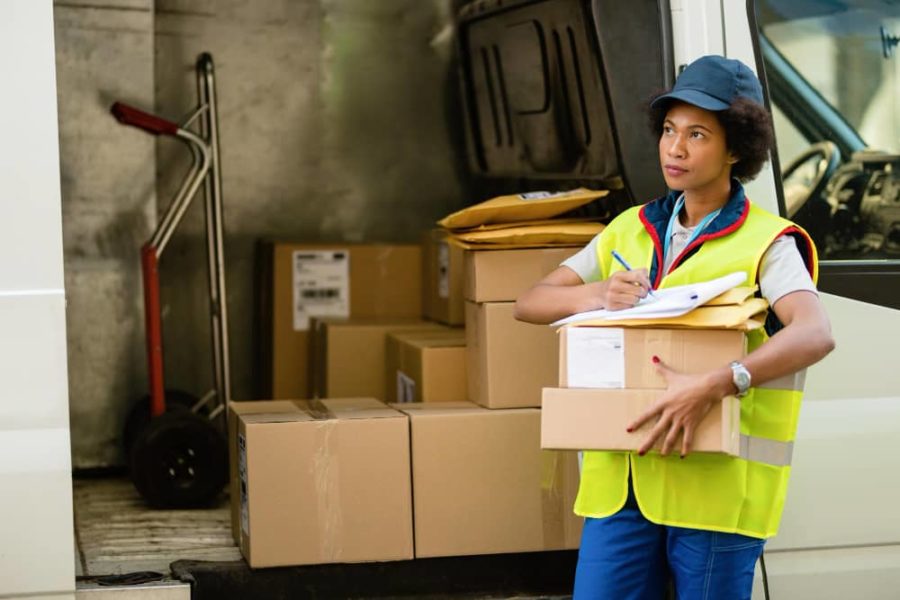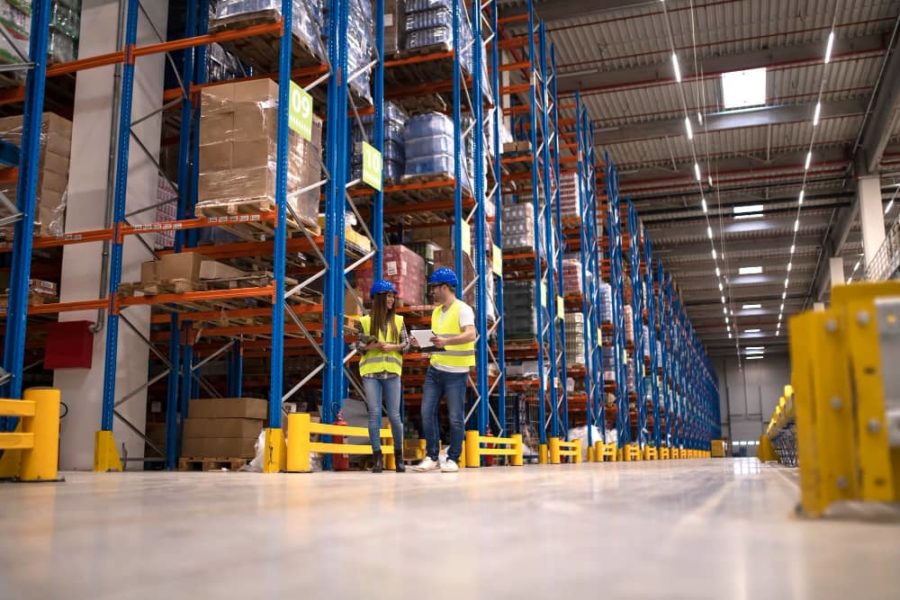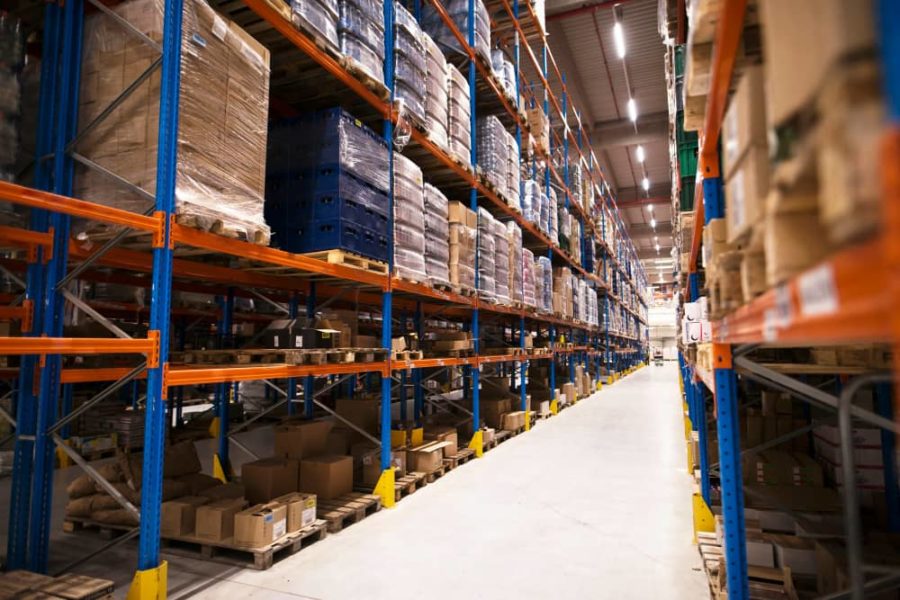Green logistics: definition, objectives, and example

Green logistics is the new challenge facing logistics companies. This article will help give you a better understanding of this development. Definition, objectives, challenges, and implementation, we provide you with all the keys to developing green logistics in your company.
Green logistics: definition
As a company, you are certainly looking to reduce your environmental impact. Integrating an environmental approach with your logistics aims to strike a happy medium between energy and economic factors. This is of equal concern to storage, manufacturing, transport…
What are the main factors to consider in green logistics? There are numerous factors:
- Use green and renewable energies;
- Fill vehicles to the greatest extent possible to reduce the number of vehicles and mileage while optimizing journeys and the empty journey problem;
- Choosing environmentally friendly and recyclable raw materials and materials;
- Having an optimized distribution network;
- Put in place cross-docking for managing supplies;
- Use environmentally responsible transport resources;
- Recycle returned and end of life goods.
But that is not all, upgrading warehouses, which consume a lot of energy and produce a lot of waste, is part of sustainable development. This entails:
- Improving insulation to reduce energy consumption both in summer and in winter;
- Installing solar panels or wind turbines to provide green energy;
- Building using sustainable materials;
- Recovering rainwater both for toilets and green spaces;
- LED lighting and motion detectors.
By fully applying this green logistics logic you will reduce both your impact and operational costs.

Green logistics: objectives & challenges
What does the introduction and deployment of green logistics do for your company? How do you face the challenges? Let’s look at this together.
Objectives
Introducing green logistics makes your Supply Chain more environmentally friendly. What that means is that everything you do (packaging, products, transport…) has a low environmental impact. This also entails improving the logistics chain to reduce soil, air, and water pollution. Route optimization is a major challenge and enables you to minimize costs with an efficient route plan in terms of vehicles used, mileage, number of customer deliveries, but also in terms of each driver’s working hours. Introducing environmentally friendly measures enables you to measure your logistics operations’ carbon footprint. To calculate it, refer to international standard UNE-EN 16258:2013.
The challenges
Embarking on green logistics requires you to confront numerous challenges, and it may be complicated to deploy certain measures:
- Consumers who do not understand the logic behind logistics: being very demanding, customers have certain delivery expectations (24 hr delivery). From a logistics perspective, adopting green logistics is complicated in terms of truck loading and the large transport flows this causes. Satisfying the customer in this respect is one of the priorities and provides real added value in this market where dissatisfaction is a major factor. Your entire business activity is made more sustainable by optimizing route tracking.
- A lack of resources: introducing environmentally friendly logistics entails certain costs, be they internalized or not.
- An ongoing shortage of infrastructure: there are still few new industrial buildings that comply with environmental regulations.
- Transport-related fossil fuels: motor fuel is the predominant freight transport energy source. Even if solutions exist (electric vehicles) they are not viable because of the high mileage involved.
- The consequences of the urban “last mile”: as explained in the opening point, the consumer demand for express deliveries is constantly increasing congestion in major built-up areas. This means that there are many more half-full trucks on the roads, thereby creating more pollution.

How does one do green logistics?
Do you want to get involved in green logistics but are wondering how to apply it? You can achieve your objectives by taking certain actions.
The environmental aspect in management policy
You can take certain environmentally friendly actions. This may be your supplier selection involving a study of packaging, for example. Are they environmentally friendly? Do they use plastic? What are their manufacturing methods?
Optimize vehicle management
Logistics is one of the areas with the highest carbon footprint. Be aware that you can introduce solutions for planning delivery journeys, while optimizing your trucks’ load factor. This enables you both to address customer requirements while improving productivity and profits. New route optimization software products calculate delivery journeys as accurately as possible to make them profitable while minimizing pollution. A productivity improvement of between 20 and 30% can be seen. This improves the entire organization of your vehicle fleet to reduce the greenhouse gas emissions caused by freight transport.
Apply environmental standards
Green logistics also entails creating infrastructure accompanying the new environmental measures. This applies to buildings, from design to construction, adopting Breeam, Leed, or HQE certification. Certain companies choose to change their conventional vehicle fleet (petrol or diesel) by equipping themselves with hybrid or electric vehicles. Adopting green logistics also means matching the packaging to the parcel size by choosing to tailor them to the products or by automating certain processes to reduce energy consumption such as artificial lighting.
Introduce recycling measures
As concerns managing your waste, you can apply certain sorting procedures depending on the recyclable materials you use. Reducing paper is integral to processes that respect the environment. Preference should be given to information capable of being centralized on IT tools.
Improve stock management
You can take measures to improve flows within the warehouse. You can choose to use automated systems and robots to prevent stock damage caused by manual product handling. Introduce inspection processes for returns or products with a use by date to optimize green logistics efficiency. Finally, to reduce your teams’ movements within the warehouse, plan picking-related activities or try to improve product addressing.
Do you want to optimize your logistics? Discover the full range of Nomadia solutions for your company.
>> Discover Nomadia solutions

Green logistics: example
Let’s take the example of Domino’s Pizza, a chain of stores offering pizza take away and delivery. In a strongly growing market in terms of increasing raw materials and equipment orders, the company wishes to optimize its supply routes. It has selected the Toursolver tool. These are the actions behind this choice:
- Real-time monitoring of itineraries and organization: evaluation of the most profitable journeys taking account of traffic constraints and each sales outlet’s hours.
- The human factor: monitoring teams optimizing delivery personnel working days to reduce time on the road.
- 100% reliable routes: no additional mileage, optimized vehicle loads.
- Lower costs: route optimization reduces transport costs by 15%.
You want to optimize your route plans. Don’t hesitate to call our experts to talk to you about our Toursolver.
Introducing green logistics is front and center of companies’ concerns. Find out what it is and how to apply it.
